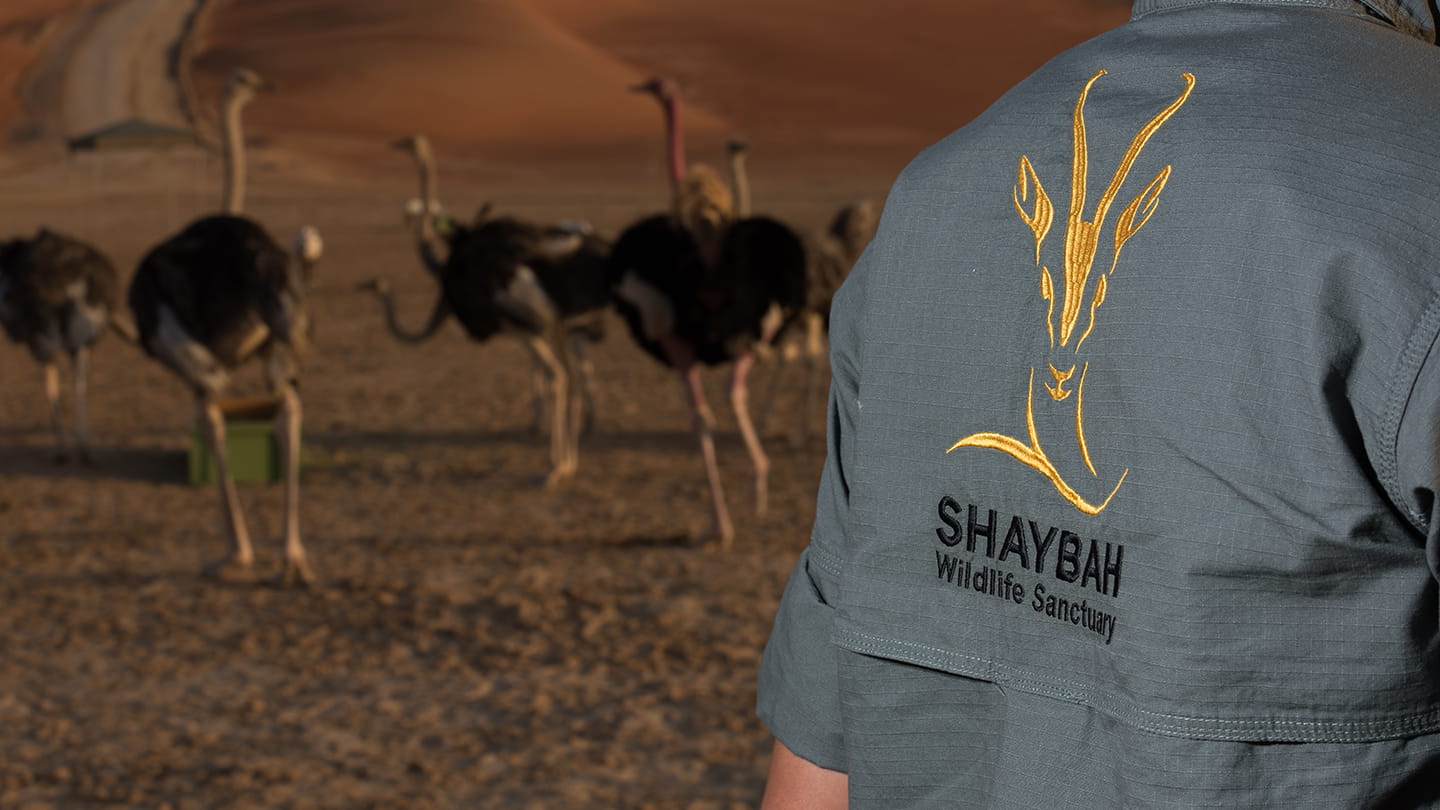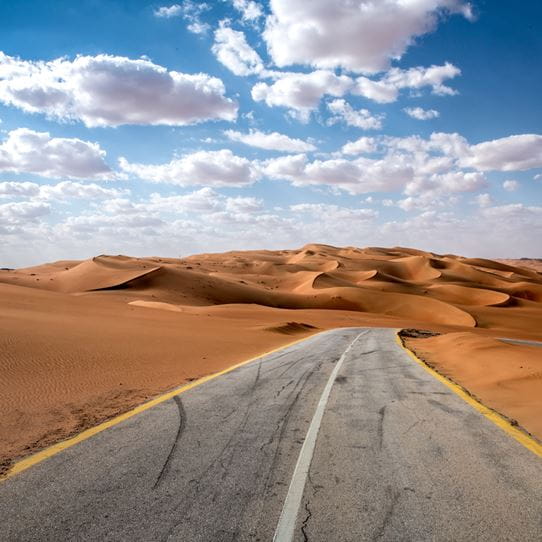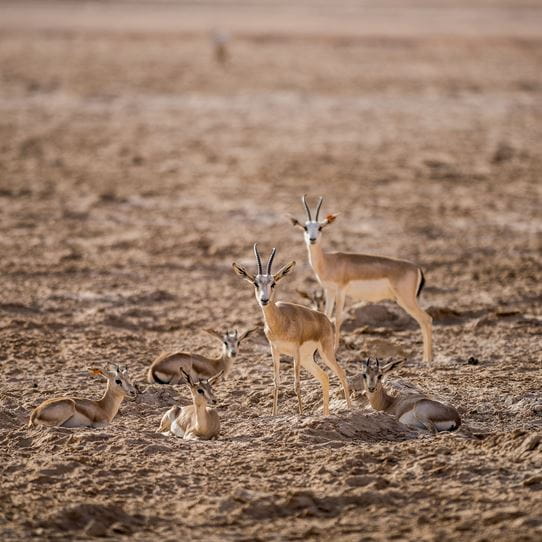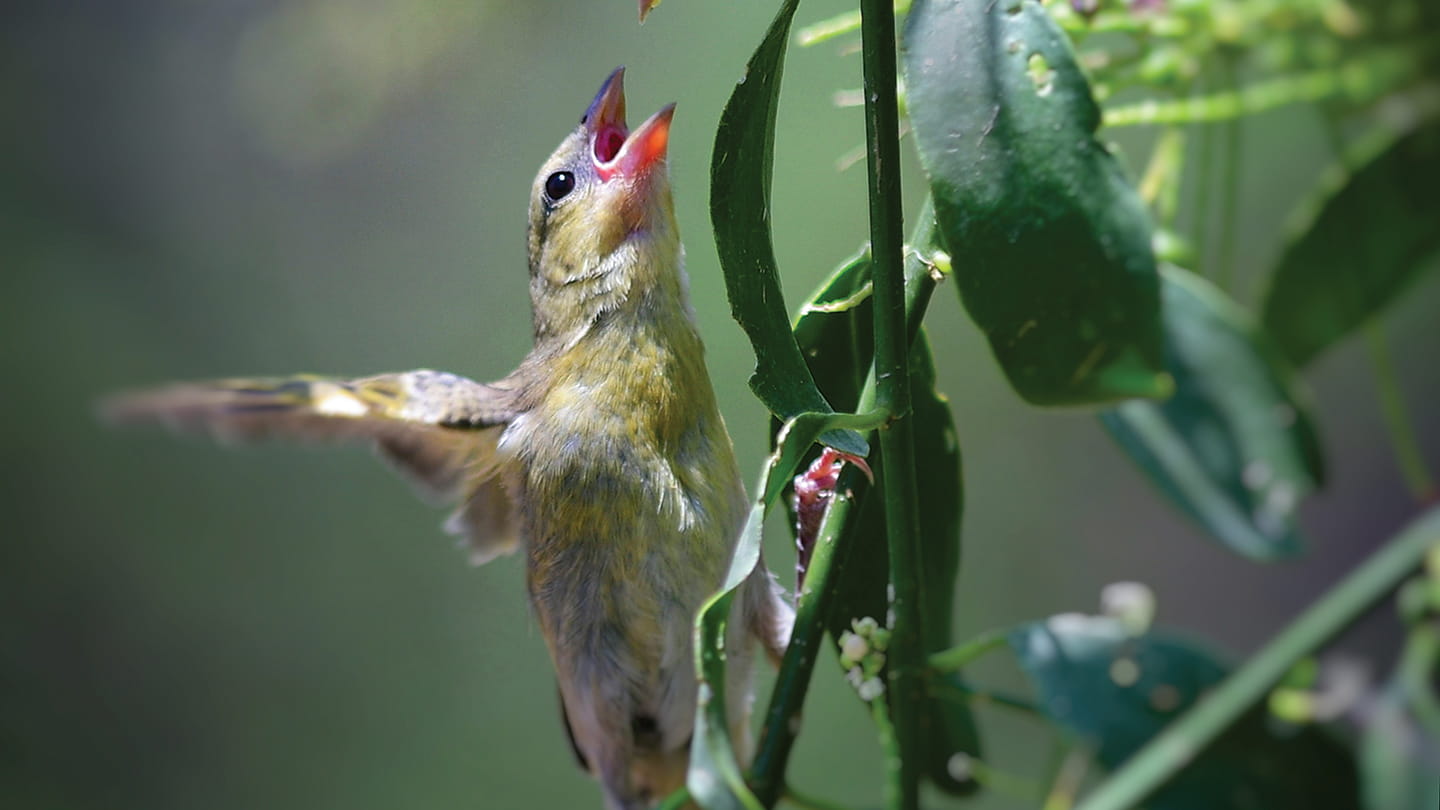
Shaybah Wildlife Sanctuary
In the Rub’ al-Khali, three Arabian species which were on the brink of extinction again roam free thanks to Aramco investment in the region.
Once a common sight, the Arabian oryx, sand gazelle, and ostrich have long been missing from this challenging but beautiful landscape — their numbers decimated by hunters over the last century. By 1972, only four Arabian oryx remained alive in the wild. The ostrich suffered its fate even earlier than the oryx. Excessive hunting caused it to disappear from the Rub’ al-Khali about 120 years ago, with the last wild ostrich recorded in the Arabian Peninsula about 1939. Sand gazelles have also seen their numbers dwindle to alarmingly low levels across Arabia for the same reasons.
The Shaybah team agreed to meet four primary goals:
restore
Restore key native species to the Rub’ al-Khali
protect
Set aside and protect a significant portion of pristine wilderness to meet our environmental stewardship goals
research
Support academic research in the field of ecology and the environment, particularly to benefit desert conservation projects worldwide
education
To provide a high-quality environmental education and visitor experience
It was against this backdrop that Aramco decided to intervene. We are restoring 637 km2 of the Rub’ al-Khali to its natural state by preventing key threatening processes such as off-road driving, hunting, grazing by camels, and firewood collection, and reintroducing three locally-extinct species — Arabian oryx, Arabian gazelle, and ostrich — within a natural, functioning ecosystem maintained at equilibrium, and free of non-native species.
The Shaybah Wildlife Sanctuary is one of our voluntary sustainability community initiatives created to contribute to biodiversity restoration in the areas in which we operate. Located adjacent to our mega-facilities in the area, the fenced sanctuary now protects dozens of native plant and animal species.
The results have been remarkable. There are now a total of 130 Arabian Oryx, 120 sand gazelle and four Red-necked ostriches in the region. Phase 2 of the project, to be completed over the next couple of years, will see further delivery of animals until optimal numbers are achieved within the sanctuary. Additionally, a research station and operations building are under construction. This phase will enhance academic partnerships between Aramco and academic institutes, paving the way for future environmental research in the area.

“Before we installed the roads, it took half a day just to travel the 12 kilometers to the sanctuary entrance. Now, with the roads in place, we can patrol the whole 106 kilometer perimeter in three hours. Only Aramco, with its deep desert construction expertise, could have pulled this off.”
Wayne Sweeting, wildlife scientist at Aramco

“To successfully re-establish any large bodied species is a rare conservation achievement globally. To establish three species into a desert — the harshest of environments — is just extraordinary. It’s incredibly rewarding — one of the highlights of my career.”
Christopher Boland, terrestrial ecologist at Aramco

Biodiversity initiatives
We strive to create a culture that prioritizes understanding of ecological habitats, and promotes their protection.